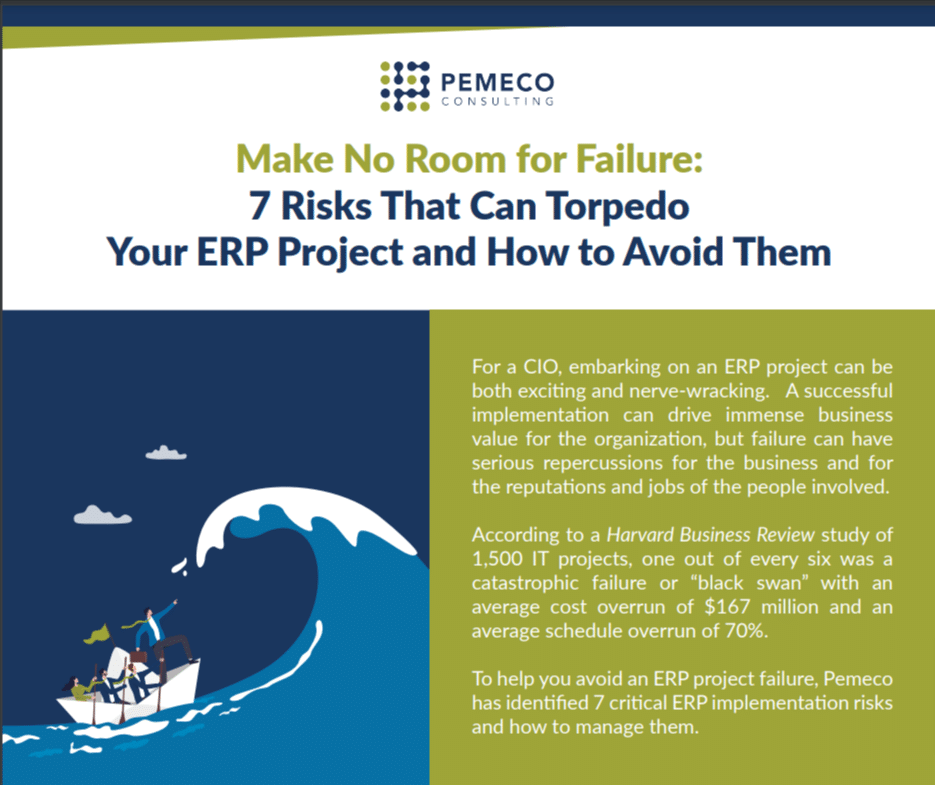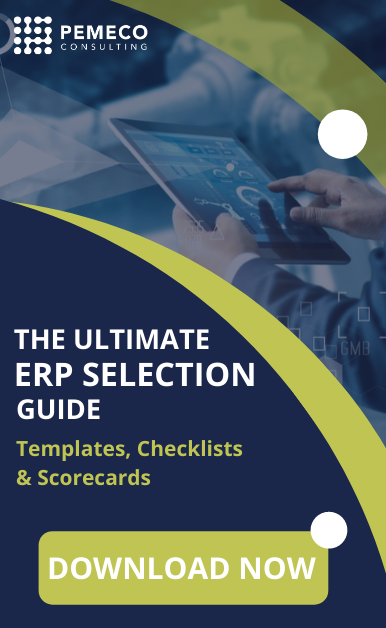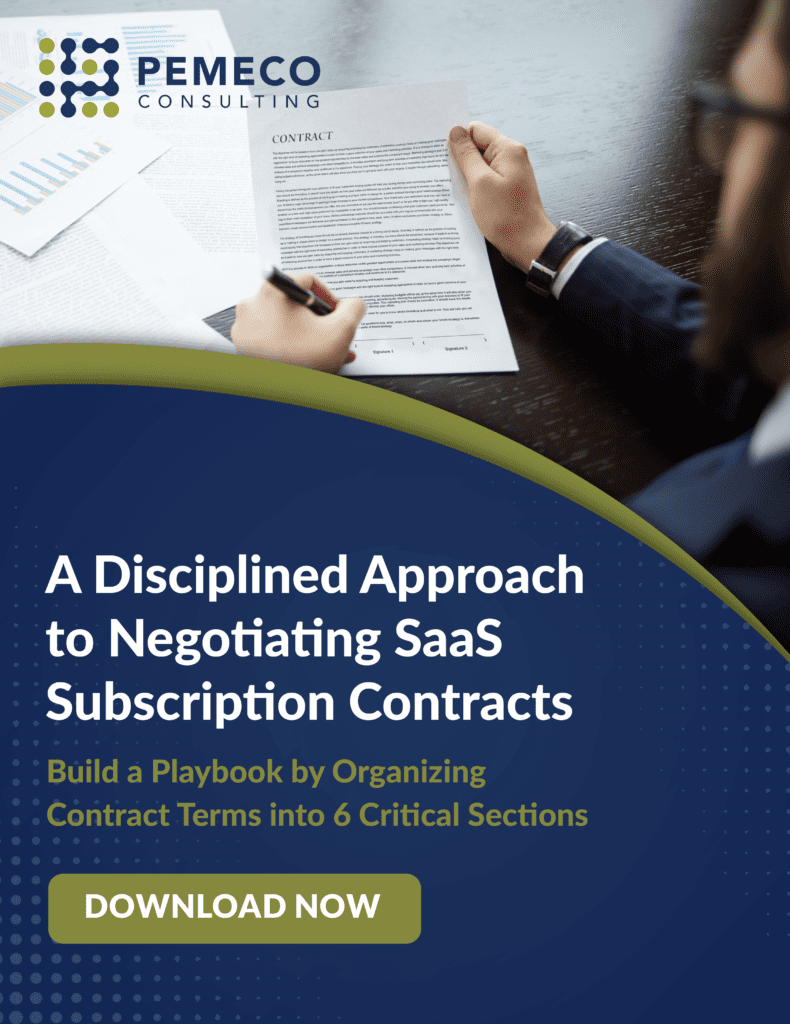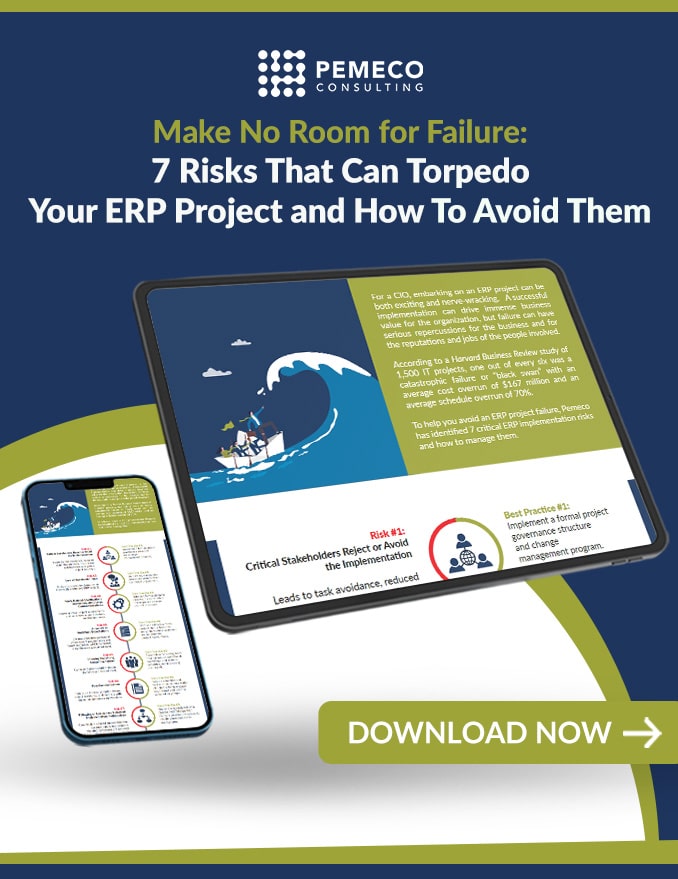Consider, for example, the case of a hypothetical company that had intended to implement ERP to help it both improve its inventory control and reduce its customer churn. These operational issues were materially impacting the company’s performance, and the ERP project was consequently designated a high priority… that is, until the most recent wave of economic volatility hit.
The company now finds itself reconsidering the timing of its ERP project. It now needs its short-term cash flow to weather the storm. It has decided that it will reactivate the project once the market stabilizes.
Our hypothetical company faces a couple of serious problems. First economic volatility and slow growth could persist for months, perhaps years. This means that its ERP project could be indefinitely suspended.
Second, the company’s focus on short-term survival will probably lead to its ultimate demise. While the company is busy hoarding cash, it won’t have done anything to fix its operational problems. So, when (if) it emerges from the short-term, it will once again find itself face-to-face with perilous circumstances. Only this time, the company’s survival is threatened by its critical – and ignored – operational issues. As they say, “out of the frying pan, into the fire”.
The unfortunate circumstances in which our company finds itself are caused by its own poor decision-making. Its decision to tackle EITHER the cash flow issue OR the operational issues is at the root. What this company failed to realize is that it probably could have found solutions that would have allowed it to deal with both sets of issues.
Now, most company representatives reading this article aren’t facing such dire corporate circumstances. However, that doesn’t mean that they’re immune to the impacts of poor decision-making. It just means that the consequences of their decisions might be delayed or otherwise occur over a protracted period.
Regardless of whether the circumstances are dire, decisions should still be made properly – based on well-reasoned analysis. And, if they’re not, companies run the risk of letting easily captured value slip right through their fingers.
Here’s a sample framework we use to help our clients re-structure their projects to accommodate changing needs.
 The bottom-right quadrant displays the juiciest fruit. The project elements that fall into this category represent the greatest opportunity to reach a workable compromise. In our company’s case, an accelerated implementation offers minimal strategic benefits, but would eat up a huge chunk of monthly cash. Changing the implementation schedule and/or periodic payment obligations could alleviate significant cash flow pressures.
The bottom-left quadrant displays other low hanging fruit, albeit less juicy. Although each item on its own isn’t likely to have a material impact on cash flow, the collection of items might. In this case, the company could consider narrowing the project scope by excluding the quality management and HR modules from implementation.
The top two quadrants display the items that are strategically important to the company with varying degrees of cash flow impact. The items in the top-left quadrant have a relatively weak impact on cash flow while those in the top-right have a more significant impact. The company should only consider eliminating these project components if 1) all of the lower priority items have already been dealt with, and 2) cash flow remains a concern.
The bottom-right quadrant displays the juiciest fruit. The project elements that fall into this category represent the greatest opportunity to reach a workable compromise. In our company’s case, an accelerated implementation offers minimal strategic benefits, but would eat up a huge chunk of monthly cash. Changing the implementation schedule and/or periodic payment obligations could alleviate significant cash flow pressures.
The bottom-left quadrant displays other low hanging fruit, albeit less juicy. Although each item on its own isn’t likely to have a material impact on cash flow, the collection of items might. In this case, the company could consider narrowing the project scope by excluding the quality management and HR modules from implementation.
The top two quadrants display the items that are strategically important to the company with varying degrees of cash flow impact. The items in the top-left quadrant have a relatively weak impact on cash flow while those in the top-right have a more significant impact. The company should only consider eliminating these project components if 1) all of the lower priority items have already been dealt with, and 2) cash flow remains a concern.
Step 1: Map the Business Needs
As a first step, we would work with our clients to map the requirements – including those that favor the project and those that appear to conflict with it. We would then prioritize those requirements. For this exercise, it’s important to drill down to a fairly granular level of detail. Let’s take a closer look at our hypothetical company’s cash flow issue. We would want to get to the root of this problem. How much monthly cash is required to weather the economic storm? How much cash can be reasonably allocated to the ERP project? In which periods should the cash be allocated? Armed with sufficiently detailed requirements, the company will have put itself in a position to critically re-evaluate the ERP project plan and its components.Step 2: Re-Evaluate the Project Plan
At this stage of the evaluation, it’s important to consider all areas of a project plan, including: scope, budget, schedule and resource requirements. Using our hypothetical example, the following chart shows the project areas that represent areas for potential compromise. The bottom-right quadrant displays the juiciest fruit. The project elements that fall into this category represent the greatest opportunity to reach a workable compromise. In our company’s case, an accelerated implementation offers minimal strategic benefits, but would eat up a huge chunk of monthly cash. Changing the implementation schedule and/or periodic payment obligations could alleviate significant cash flow pressures.
The bottom-left quadrant displays other low hanging fruit, albeit less juicy. Although each item on its own isn’t likely to have a material impact on cash flow, the collection of items might. In this case, the company could consider narrowing the project scope by excluding the quality management and HR modules from implementation.
The top two quadrants display the items that are strategically important to the company with varying degrees of cash flow impact. The items in the top-left quadrant have a relatively weak impact on cash flow while those in the top-right have a more significant impact. The company should only consider eliminating these project components if 1) all of the lower priority items have already been dealt with, and 2) cash flow remains a concern.
The bottom-right quadrant displays the juiciest fruit. The project elements that fall into this category represent the greatest opportunity to reach a workable compromise. In our company’s case, an accelerated implementation offers minimal strategic benefits, but would eat up a huge chunk of monthly cash. Changing the implementation schedule and/or periodic payment obligations could alleviate significant cash flow pressures.
The bottom-left quadrant displays other low hanging fruit, albeit less juicy. Although each item on its own isn’t likely to have a material impact on cash flow, the collection of items might. In this case, the company could consider narrowing the project scope by excluding the quality management and HR modules from implementation.
The top two quadrants display the items that are strategically important to the company with varying degrees of cash flow impact. The items in the top-left quadrant have a relatively weak impact on cash flow while those in the top-right have a more significant impact. The company should only consider eliminating these project components if 1) all of the lower priority items have already been dealt with, and 2) cash flow remains a concern.






